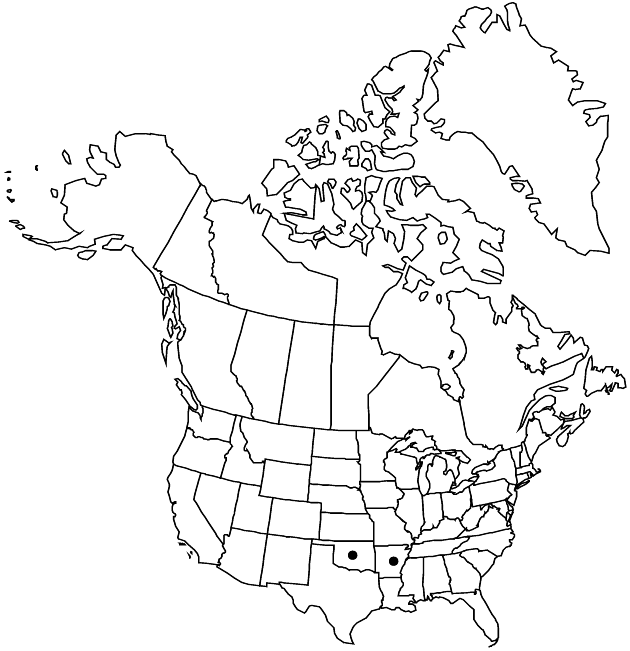Difference between revisions of "Solidago ouachitensis"
Sida 11: 334, fig. 1. 1986.
FNA>Volume Importer |
FNA>Volume Importer |
||
| Line 50: | Line 50: | ||
|publication year=1986 | |publication year=1986 | ||
|special status= | |special status= | ||
| − | |source xml=https://jpend@bitbucket.org/aafc-mbb/fna-data-curation.git/src/ | + | |source xml=https://jpend@bitbucket.org/aafc-mbb/fna-data-curation.git/src/f6b125a955440c0872999024f038d74684f65921/coarse_grained_fna_xml/V19-20-21/V20_258.xml |
|tribe=Asteraceae tribe Astereae | |tribe=Asteraceae tribe Astereae | ||
|genus=Solidago | |genus=Solidago | ||
Revision as of 18:42, 24 September 2019
Plants 60–110 cm; caudices woody. Stems 1–3+, erect, straight, glabrous proximally to sparsely hairy in arrays. Leaves: basal withering by flowering; proximal cauline sessile, blades elliptic, 100–130 × 35–45 mm, margins sharply serrate (with 20–31 teeth), abaxial faces glabrous, adaxial glabrous or sparsely hairy; distal cauline sessile, blades narrowly elliptic, 65–80 × 13–24 mm, bases cuneate, margins entire to slightly serrate, apices acuminate, faces glabrous. Heads 25–50, in non-secund, short, axillary and terminal racemiform/paniculiform arrays 13–25 cm. Peduncles 0.5–3 mm, sparsely hispido-strigose; bracteoles ovate, 1–3 near each head, grading into phyllaries. Involucres narrowly campanulate, (6.5–)7–8 mm. Phyllaries in ca. 3–4 series, unequal, 1-nerved, obtuse; outermost linear-oblong, 0.8–1.3 mm. Ray florets 1; laminae 2.4–4.7 × ca. 1 mm. Disc florets 4–5; corollas 1.8–2.8 mm, lobes 0.8–1.6 mm. Cypselae 1.5–2.7 mm, glabrous; pappi 3–3.5 mm. 2n = 18.
Phenology: Flowering Sep–Oct.
Habitat: Woods of north facing slopes
Elevation: 500–700 m
Discussion
Of conservation concern.
Historically Solidago ouachitensis has been included in S. caesia or S. curtisii; it is ecologically and morphologically distinct.
Solidago ouachitensis is known only from the mesic, north-facing slopes of the Ouachita Mountains along the border of Arkansas and Oklahoma. It is a very infrequent species deserving protection and is in the Center for Plant Conservation’s National Collection of Endangered Plants.
Selected References
None.
